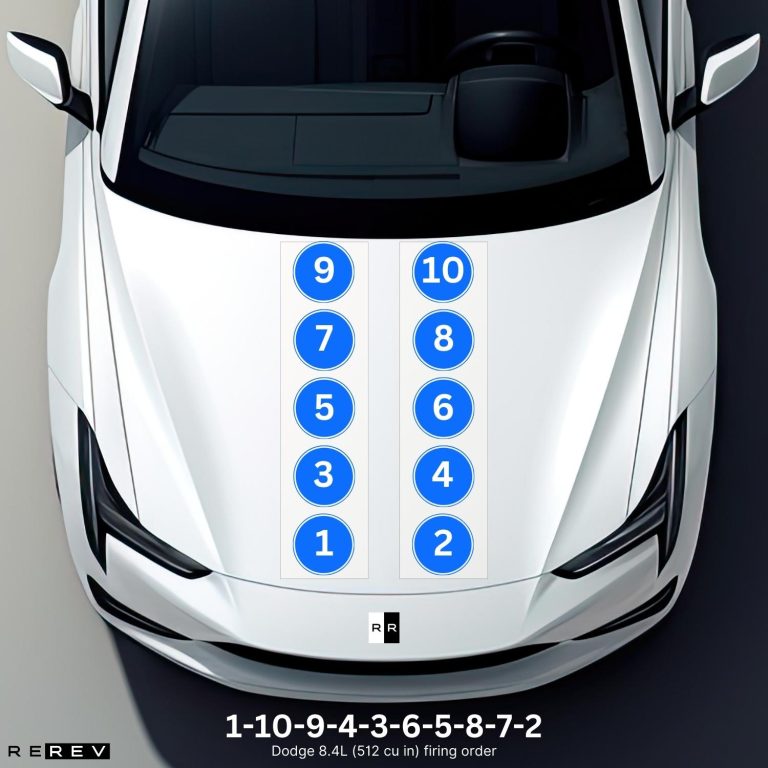Dodge 8.4L (512 cu in) firing order — diagram & guide
Explore the power dynamics of the Dodge 8.4L firing order.

With the final fifth generation of Dodge Viper, the iconic model went into history and so did the final version of the 8.4-liter V10 engine. However, it will surely remain widely popular among driving enthusiasts who can afford it, and that leads us to maintenance issues.
Most notably, most drivers are wondering if the Dodge 8.4L (512 cu in) firing order is the same as with the previous generations of the Dodge V10 engine. So, without further delay, our team will lay down all the facts and details that will help you keep the engine running for a few miles longer.
Dodge 8.4L V10 firing order
Let’s start with the most important thing – the Dodge 8.4L V10 firing order is 1-10-9-4-3-6-5-8-7-2 and this applies for all the model years of the Viper SRT-10. The ACR version and other high-performance variants are also powered by the same engine with the same firing order regardless of the minor power tweaks.
The engine features some performance-related upgrades when compared to the previous version of the Dodge V10. For instance, crankshafts are made of forged steel and this is the factory option which is impressive enough. Plus, an aluminum cylinder head makes it even more special and that’s why you shouldn’t expect any major engine issues.
For minor problems with the spark plugs and coil packs, a simple solution is to check each cylinder based on its firing order. To do that, you’ll also need to know the cylinder numbers, so let’s get to that next.
Dodge 8.4L cylinder diagram

If you look at the engine from front to back, you’ll see two cylinder banks each containing five cylinders. The first cylinder is the first one on the left side, also known as the Bank 1 of the engine. This engine side also includes cylinders 3, 5, 7, and 9.
The right Bank 2 comes with cylinders 2, 4, 6, 8, and 10, and this one is positioned a bit higher than the left bank. This makes it much easier to identify the first cylinder since it’s inclined a bit more towards the front end of the engine.
Dodge 8.4L vehicle applications
Since it’s a pretty unique engine, the Dodge 8.4-liter V10 was only used in one vehicle model. Throughout the years 2013 to 2017, it was used in the following versions of the Viper:
- Sixth-gen Dodge Viper
- Dodge Viper SRT-10
- Dodge Viper ACR
There were some talks about the engine also making it to some larger SUVs and trucks in their high-performance version like the Jeep Trackhawk, but so far it didn’t happen and the engine was exclusively used for the Viper.
Our take
For all the Viper fans, the SRT-10 engine will always be remembered as one of the probably most distinctive engines in this vehicle category ever made. For those lucky enough to own one, we hope you’ll maintain it properly and our guide will give you some pointers along the way.